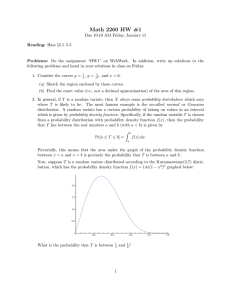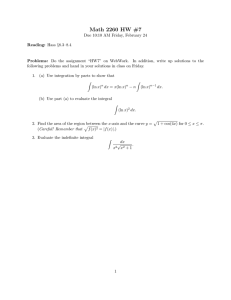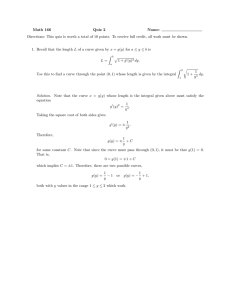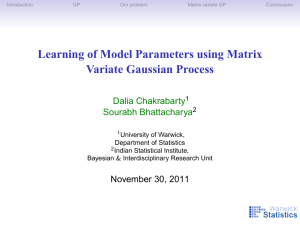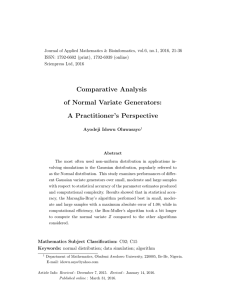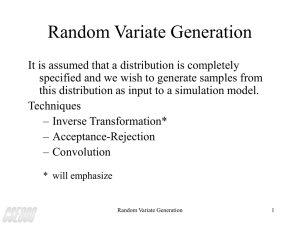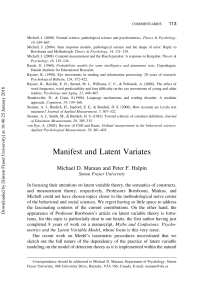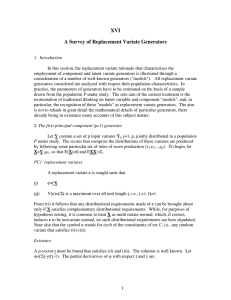Math 2260 Written HW #1 Solutions
advertisement
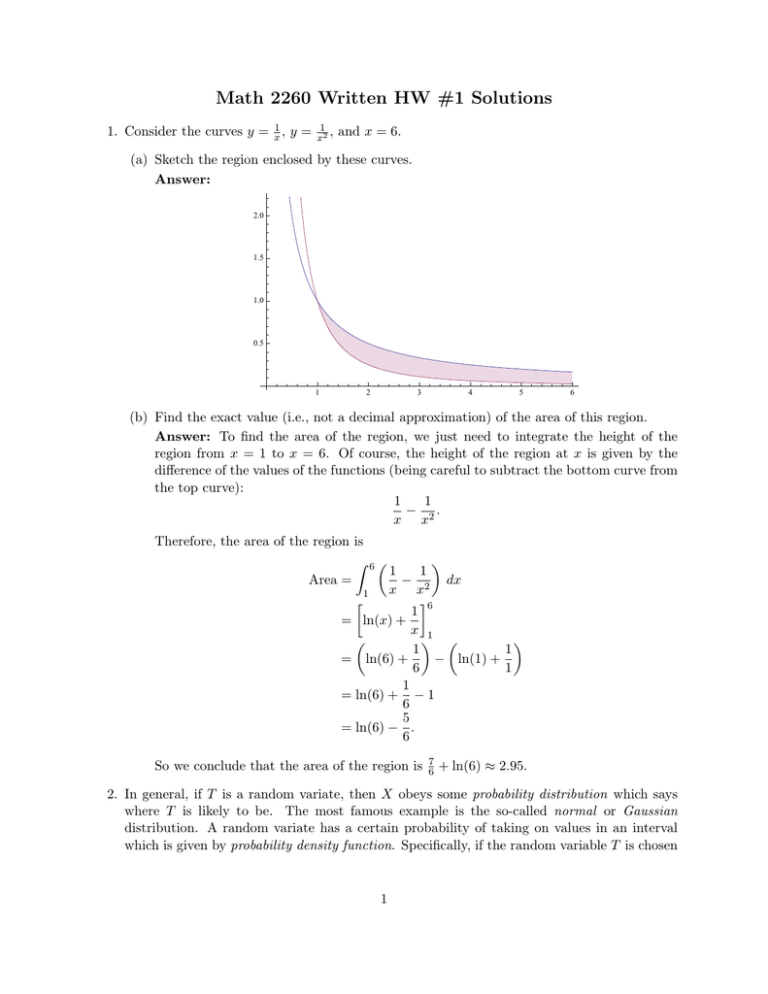
Math 2260 Written HW #1 Solutions 1. Consider the curves y = x1 , y = 1 , x2 and x = 6. (a) Sketch the region enclosed by these curves. Answer: 2.0 1.5 1.0 0.5 1 2 3 4 5 6 (b) Find the exact value (i.e., not a decimal approximation) of the area of this region. Answer: To find the area of the region, we just need to integrate the height of the region from x = 1 to x = 6. Of course, the height of the region at x is given by the difference of the values of the functions (being careful to subtract the bottom curve from the top curve): 1 1 − 2. x x Therefore, the area of the region is Z Area = 6 1 1 − dx x x2 1 1 6 = ln(x) + x 1 1 1 = ln(6) + − ln(1) + 6 1 1 = ln(6) + − 1 6 5 = ln(6) − . 6 So we conclude that the area of the region is 7 6 + ln(6) ≈ 2.95. 2. In general, if T is a random variate, then X obeys some probability distribution which says where T is likely to be. The most famous example is the so-called normal or Gaussian distribution. A random variate has a certain probability of taking on values in an interval which is given by probability density function. Specifically, if the random variable T is chosen 1 from a probability distribution with probability density function f (x), then the probability that T lies between the real numbers a and b (with a < b) is given by Z b Pr[a ≤ T ≤ b] = f (x) dx. a Pictorially, this means that the area under the graph of the probability density function between x = a and x = b is precisely the probability that T is between a and b. Now, suppose T is a random variate distributed according to the Kuramaswamy(2,7) distribution, which has the probability density function f (x) = 14x(1 − x2 )6 graphed below: 2.0 1.5 1.0 0.5 0.2 0.4 What is the probability that T is between 0.6 1 4 0.8 1.0 and 21 ? Answer: By definition of the probability density function, the probability that T is between 1 1 4 and 2 is exactly Z 1/2 Z 1/2 1 1 ≤T ≤ = f (x) dx = 14x(1 − x2 )6 dx Pr 4 2 1/4 1/4 which is to say, the area of the following region under the curve: 2.0 1.5 1.0 0.5 0.2 0.4 0.6 2 0.8 1.0 To evaluate this integral, we can do a u-substitution where u = 1 − x2 . Then du = −2x dx, so the above integral is equal to Z 1/2 Z 2 6 2x(1 − x ) dx = −7 −7 1/4 3/4 u6 du 15/16 7 3/4 u 7 15/16 " 7 # 3 7 15 =− − 4 16 = −7 = 157 37 − , 167 47 which is fine to leave as is, or you could expand out to get the probability as the single fraction 1 135, 025, 567 1 ≤T ≤ = ≈ 0.503. Pr 4 2 268, 435, 456 3
